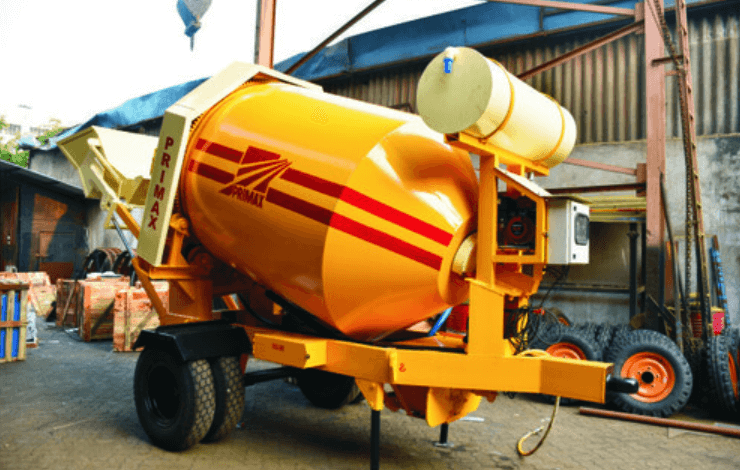self loading mixer: A Smart Tool for Scaling Small Construction Businesses

For small construction companies and independent contractors, achieving this balance can be the difference between breaking even and turning a profit. That’s where the self loading mixer comes into play—a practical, reliable, and transformative tool for streamlining concrete production and site management.
This compact machine is engineered to reduce dependency on external vendors, lower labor costs, and speed up operations—benefits that directly contribute to growth and scalability for smaller firms.
In this article, we’ll discuss how the self loading mixer can help small businesses scale, serve more clients, and complete projects faster while keeping expenses low.
Understanding the self loading mixer Advantage
The typical concrete process involves multiple steps: sourcing materials, transporting them to a batching plant, waiting for mixing, transporting the mix to the site, and finally pouring it. For small companies, coordinating all these steps without delays or budget overruns is a constant struggle.
A Self Loading Mixer removes most of these hurdles by integrating the entire process into one mobile unit:
- Raw material loader (hydraulic bucket)
- Onboard weighing and batching system
- Concrete mixing drum (rotating while in transit)
- Water dosing system with storage tank
- Mobile discharge with tilt and rotation
With one machine and a trained operator, small contractors can efficiently prepare fresh concrete exactly where and when it’s needed.
See also: Payroll Outsourcing Australia: A Smarter Strategy for Modern Businesses
Why Small Construction Firms Are Investing in self loading mixers
While larger companies may already have access to batching plants and fleets of transit mixers, smaller firms often rely on third-party suppliers or hire equipment as needed—both expensive and inefficient options in the long run.
The self loading mixer offers:
1. Cost Control
Rather than paying for outsourced concrete deliveries or renting multiple machines, one purchase handles all tasks. This dramatically lowers monthly operational expenses.
2. Operational Flexibility
3. Scalability
Once you own a self loading mixer, you can take on more projects simultaneously or serve harder-to-reach clients—expanding your service area without expanding your crew.
Case Example: How One Contractor Scaled Using a self loading mixer
Take the example of Ahmed Construction, a small firm handling 1–2 housing projects per year in rural Pakistan. Initially, the company relied on local batching plants that were often unreliable or too far from job sites, leading to delays and poor-quality mixes.
After investing in a 2.5 m³ self loading mixer, Ahmed Construction:
- Reduced project timelines by 30%
- Lowered concrete wastage by 25%
- Took on 4 simultaneous small projects within 12 months
- Recovered their investment within 14 months
The mixer’s efficiency allowed them to compete with bigger companies for government and private contracts—without increasing their workforce.
Ideal Projects for a self loading mixer
For small and medium construction firms, the Self Loading Mixer is especially useful for:
- Residential foundations and driveways
- Community buildings and schools
- Pavements, culverts, and small roads
- Warehouse and farm sheds
- Water tanks and septic installations
Its flexibility makes it a one-machine solution across diverse job types.
How to Choose the Right Model
Selecting the right self loading mixer depends on your typical job size and volume.
| Project Type | Suggested Drum Capacity |
| Home renovations | 1.2 m³ – 1.8 m³ |
| Small residential buildings | 2.0 m³ – 2.5 m³ |
| Rural road work | 3.0 m³ – 4.0 m³ |
| Light commercial buildings | 4.0 m³ – 5.5 m³ |
Reputable brands such as Daswell, Ajax, Venus, Fiori, and Carmix offer a range of models tailored to various construction needs.
Maintenance: Keeping It Running Without a Big Team
One reason small contractors are sometimes hesitant to invest in equipment is maintenance.
Basic maintenance tasks:
- Grease hydraulic joints every 50 hours of operation
- Monitor water filters and refill tanks as needed
- Calibrate weighing systems every few months
- Replace filters and check engine oil regularly
With some basic operator training, these tasks can be handled without needing a full-time mechanic.
Financing and Leasing Options for Small Firms
Don’t let upfront costs hold you back. Many vendors and financial institutions offer flexible payment options, including:
- Equipment leasing plans
- Bank loans tailored for machinery
- Monthly EMI options
- Second-hand or refurbished units with warranties
For growing businesses, the ROI from a self loading mixer often justifies financing within 12–18 months of purchase.
Final Thoughts: Turning Small Teams into Competitive Builders
In a market where margins are tight and competition is high, success belongs to those who adopt smarter tools. The self loading mixer helps small construction companies and independent builders reduce costs, improve reliability, and scale up their operations with confidence.
With better control over concrete quality, timing, and jobsite logistics, you can take on more projects, serve new areas, and build a reputation for professionalism and consistency.
Whether you’re just starting out or looking to expand your business footprint, investing in a self loading mixer could be the best decision you make this year.





